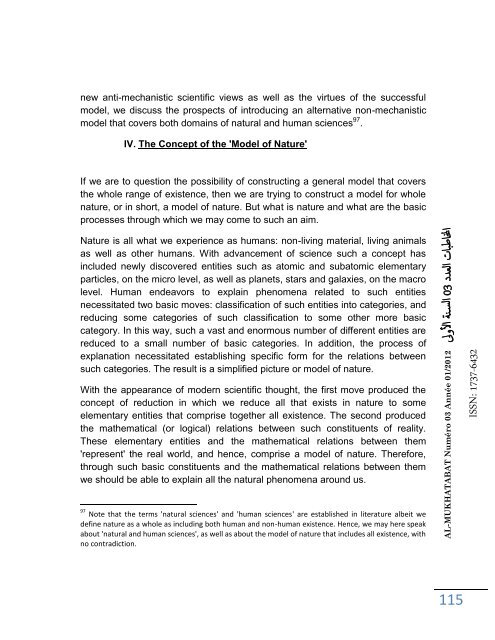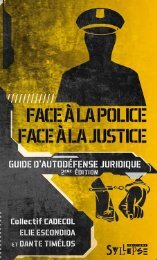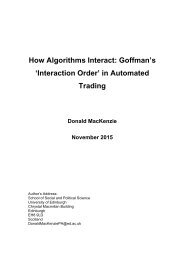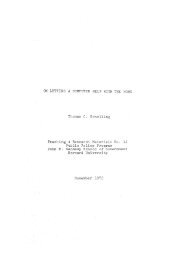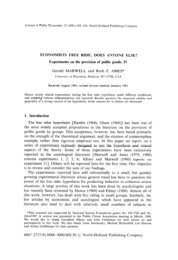n3-al-mukhatabat-journal
n3-al-mukhatabat-journal
n3-al-mukhatabat-journal
Create successful ePaper yourself
Turn your PDF publications into a flip-book with our unique Google optimized e-Paper software.
new anti-mechanistic scientific views as well as the virtues of the successful<br />
model, we discuss the prospects of introducing an <strong>al</strong>ternative non-mechanistic<br />
model that covers both domains of natur<strong>al</strong> and human sciences 97 .<br />
IV. The Concept of the 'Model of Nature'<br />
If we are to question the possibility of constructing a gener<strong>al</strong> model that covers<br />
the whole range of existence, then we are trying to construct a model for whole<br />
nature, or in short, a model of nature. But what is nature and what are the basic<br />
processes through which we may come to such an aim.<br />
Nature is <strong>al</strong>l what we experience as humans: non-living materi<strong>al</strong>, living anim<strong>al</strong>s<br />
as well as other humans. With advancement of science such a concept has<br />
included newly discovered entities such as atomic and subatomic elementary<br />
particles, on the micro level, as well as planets, stars and g<strong>al</strong>axies, on the macro<br />
level. Human endeavors to explain phenomena related to such entities<br />
necessitated two basic moves: classification of such entities into categories, and<br />
reducing some categories of such classification to some other more basic<br />
category. In this way, such a vast and enormous number of different entities are<br />
reduced to a sm<strong>al</strong>l number of basic categories. In addition, the process of<br />
explanation necessitated establishing specific form for the relations between<br />
such categories. The result is a simplified picture or model of nature.<br />
With the appearance of modern scientific thought, the first move produced the<br />
concept of reduction in which we reduce <strong>al</strong>l that exists in nature to some<br />
elementary entities that comprise together <strong>al</strong>l existence. The second produced<br />
the mathematic<strong>al</strong> (or logic<strong>al</strong>) relations between such constituents of re<strong>al</strong>ity.<br />
These elementary entities and the mathematic<strong>al</strong> relations between them<br />
'represent' the re<strong>al</strong> world, and hence, comprise a model of nature. Therefore,<br />
through such basic constituents and the mathematic<strong>al</strong> relations between them<br />
we should be able to explain <strong>al</strong>l the natur<strong>al</strong> phenomena around us.<br />
97 Note that the terms 'natur<strong>al</strong> sciences' and 'human sciences' are established in literature <strong>al</strong>beit we<br />
define nature as a whole as including both human and non-human existence. Hence, we may here speak<br />
about 'natur<strong>al</strong> and human sciences', as well as about the model of nature that includes <strong>al</strong>l existence, with<br />
no contradiction.<br />
AL-MUKHATABAT Numéro 03 Année 01/2012 لىولأا ةن سلا 30 ددعلا تابطانا<br />
115<br />
ISSN: 1737-6432


